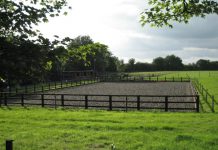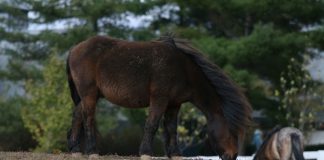Horse owners can attest that their days aren’t all filled with riding fun. There is plenty of work that comes along with the responsibility of horses. Tasks like daily feeding, stall cleaning, trough scrubbing and filling, and moving hay are just part of the lifestyle that go with riding and hanging out with horses. Here are some tips on how to repair horse-farm fencing, including step-by-step checkpoints and repair guides for wood, PVC and electric fencing.
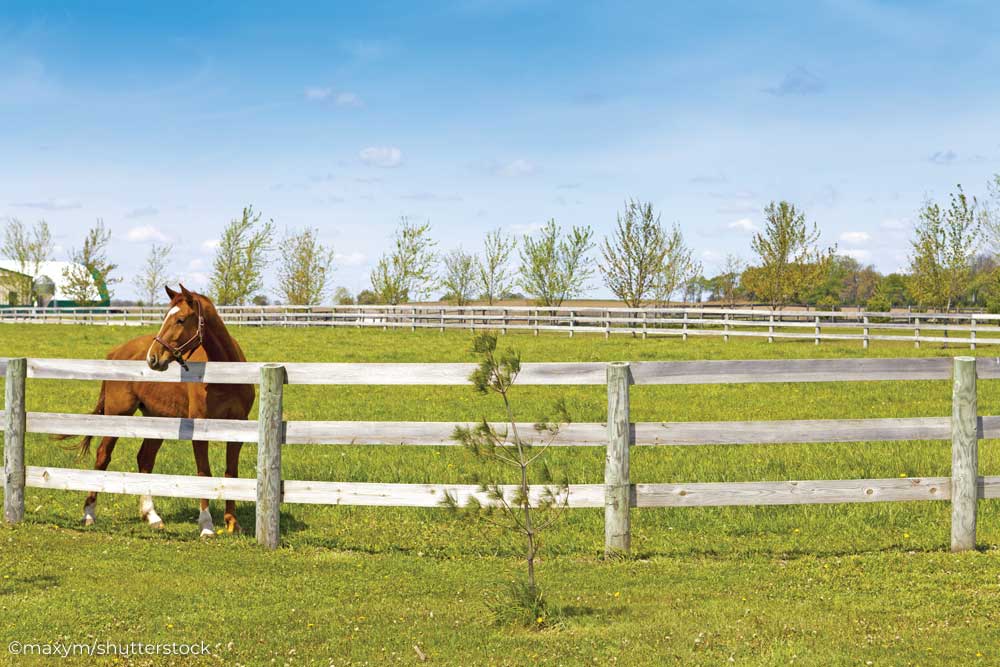
Another task that falls into this routine chore category is fencing—specifically, fencing repair and maintenance.
As spring emerges, you’ll have the perfect opportunity to inspect your fencing for the season ahead when turnout time will increase. Get started now with our handy fencing checklist.
Top 3 Inspection Checkpoints For All Types of Fencing
Post Inspection
First thing to do when going around inspecting your fence when doing any sort of repairs is to walk around the pasture and check each post—is it still sturdy? Is there any rot forming right at ground level (the weakest point of a wooden post)? Has it been chewed beyond salvaging? Perhaps it’s time to grab the post-hole digger and replace it.
Gate Inspection
Second thing to do when going around inspecting your fence when doing any sort of repairs are to check your gates. Gates are heavy, and frost is likely to form around them, sometimes causing the gate posts to lean. Is your gate leaning heavily? Maybe it’s time to completely reinstall it. How about the latch system? Is it still functioning well or have you used baling twine to make a temporary fix?
Pasture Inspection
While you’re out there checking the fence, why not give the overall pasture a good look? Have any poisonous plants or weeds cropped up? Are there any fallen branches or other unwanted debris laying around?
Electric Fencing
Electric fencing should—in theory—require minimal maintenance, but there are still several key checklist items to look out for. Some of these include:
Insulators
Non-conducting insulators are used with electric fencing to attach the wires to fence posts while preventing shorts.
Whether your electric fence uses plastic or wooden insulators, it’s a good idea to look them over periodically for damage. Insulators can occasionally be pulled loose by animals such as deer attempting to cross the fence or by fallen tree limbs. UV rays from the sun can also break down plastic insulators over time, although UV-resistant varieties are available for some fence styles.
Fence Tension
Electric fencing is under constant tension, which can eventually cause it to stretch, so periodic tightening (per your fence system’s instructions) is sometimes needed. Proper tension also helps the electric current stay strong.
Voltage
Though you certainly tested your electric fence’s performance with a voltage tester when you installed it, it’s a good idea to make rechecking it part of your fence maintenance checklist. Voltage drops commonly occur from weed buildup, which can be remedied by preventing excessive weeds from touching and shorting out the fence.
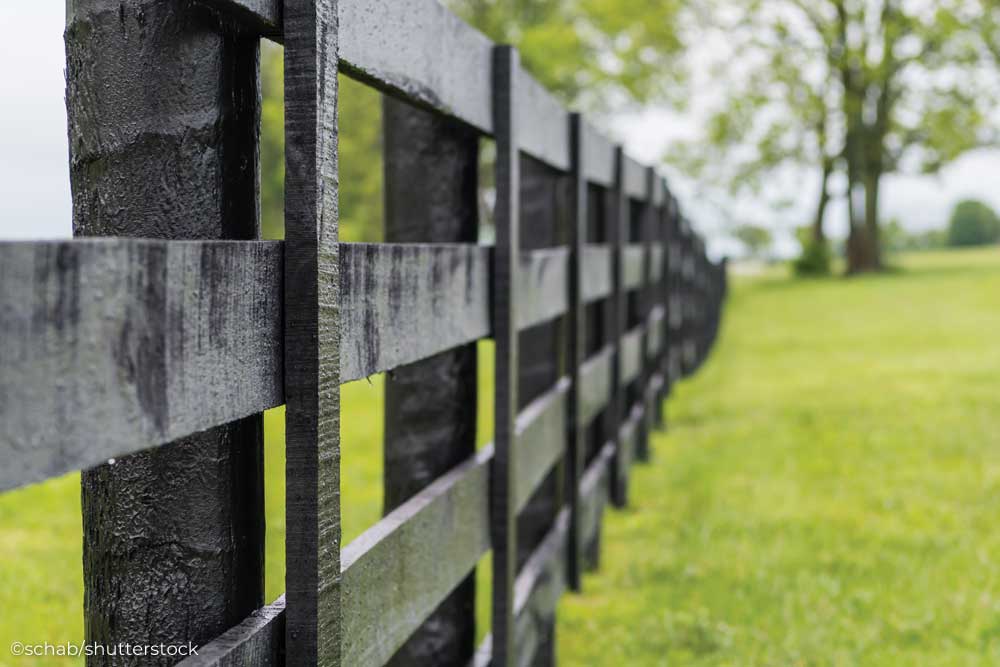
Voltage drops can also occur from changes in the moisture content of the ground; if you have a dry season, the voltages may drop significantly. Rather than investing in a more powerful fence charger, a better solution might be to add more ground rods to your system, or to turn one of your fence wires into a ground line that will ensure a shock if a horse touches multiple fence wires at once (called a hot/ground system).
Wood Fencing
It’s hard to beat classic three- or four-board wood fencing for a timeless feel around your barn and property, but these fences may require more upkeep and repairs than others. Some steps include:
Check for Chewed-Up Boards
Remember that bored horses chew boards. Especially in winter, they will probably try to chew on any handy wooden surface—and they’ll thank you for installing a convenient fence just for that purpose! Make frequent checks of your wooden fencing and replace heavily chewed rails and posts before they become weak. Also, try to prevent this problem in the first place, if possible, by giving your horse other things to do (hay feeders, horse-safe toys, et cetera).
Discourage Wear
Horses that push, lean, or scratch on wooden fencing may wear out the rails and posts prematurely. One way to discourage this behavior is to run a single wire of electric fence along the inside of the wooden fence—it won’t detract visually from the look of it and will give your horses more respect for the barrier. It might even prevent some chewing.
Keep Painting
Protecting your wooden fence from the deteriorating effects of nature is just as important as protecting it from the horses themselves. In many cases, this means regular painting and repainting of the fence is necessary to prevent moisture from rotting the wood (and keeps it looking good). Fences made from pressure-treated wood may not have to be painted, although you might want to since it often has a greenish cast to it.
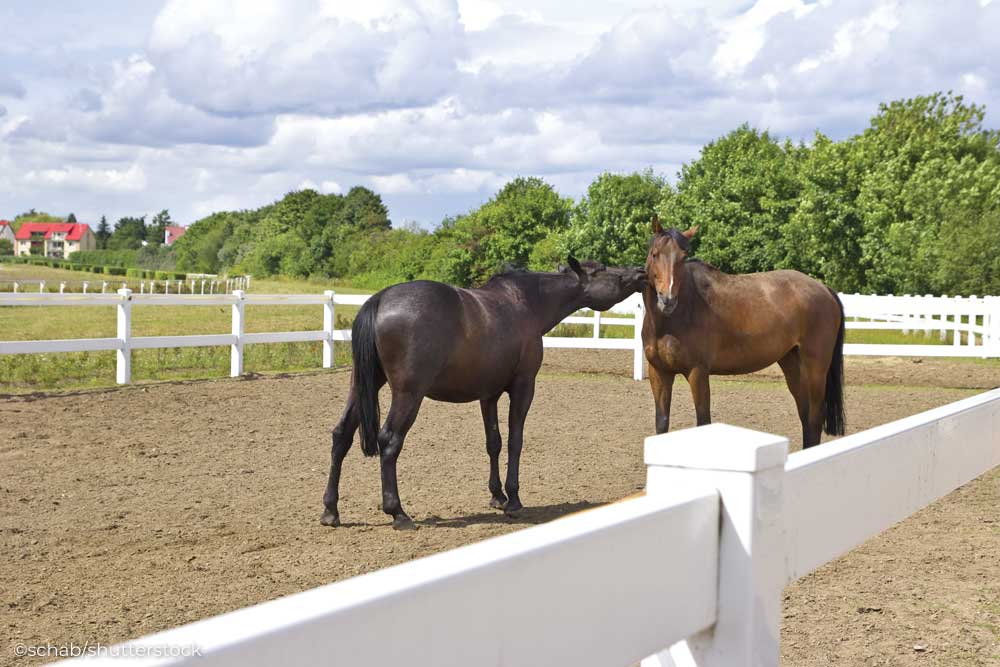
PVC/Vinyl Fencing
Horse owners seeking the aesthetics of wood fencing but who want a less labor-intensive product sometimes turn to PVC fencing. It’s true that there is less maintenance, but there are still some points to watch out for.
Keep it Clean
PVC fencing doesn’t need painting, and with a UV-resistant coating, its color shouldn’t fade in the sun. PVC fence is even resistant to dirt, but it does require a good washing now and then to keep it looking its best. It’s also possible for mildew or mold to form on PVC, causing unsightly stains, so treatment with a bleach solution is sometimes required.
Check for Damage
For all its advantages, PVC fencing is still essentially made of plastic. The rails on PVC fences for horses are designed to pop out somewhat easily under pressure, which can be a good safety feature. But it also means that you’ll have to be on a fairly constant lookout for areas of the fence where horses have pushed or kicked the rails and knocked them off. Some PVC fences may have a little “give” to them, but if the plastic actually breaks, it can be very sharp. As with wood fencing, running a hot wire along the fence can help deter horses from playing with it.
Stone Crib Fence Post
In cold regions, heavy ground frost during the winter can cause all kinds of problems with your fence posts, pushing them upward and making them unstable. This is particularly common around gate posts where frequent traffic drives the frost deeper into the ground. Likewise, certain low areas of your property that are often wet or muddy may make it challenging to install a traditional fence post.
For both of these situations, a stone crib post may be a simple solution. A stone crib is a large wooden or wire cage filled with stones that can be used to hold up a fence post above ground—no digging required. Stone cribs are more immune from the troubles of wet or frozen ground since they can simply “ride” on top of the soil, and they can be a good solution for a troublesome area on your horse property.
Fence maintenance doesn’t have to be a hard chore—it can actually be a rather nice way to spend a sunny afternoon. Take along a friend and some music and enjoy!
This article originally appeared in the April 2019 issue of Horse Illustrated magazine. Click here to subscribe!



